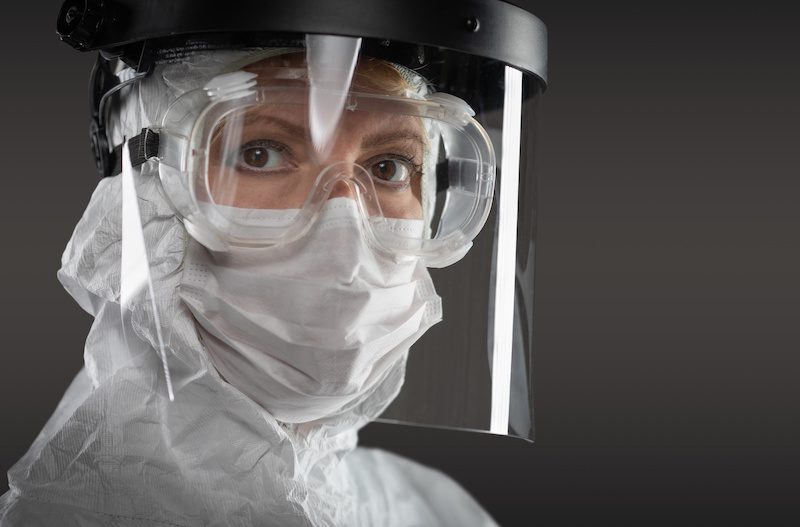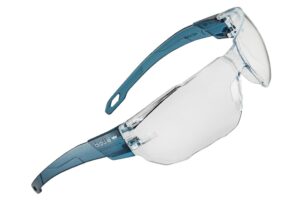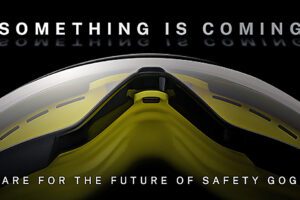Here’s a quick guide to the range of Standards that apply to personal protective equipment (PPE) that may be used by your operation during COVID-19.
Standards relating to key Personal Protective Equipment (PPE) for medical applications and environments are listed below, as an example of the resources available from Standards Australia. Please note that some PPE meets the definition of a medical device.
Manufacturers and sponsors of medical devices must meet regulatory obligations including under the Therapeutic Goods Act 1989 (Cth), before medical devices can be legally supplied in or exported from Australia.
More information is available on the Therapeutic Goods Administration’s website: www.tga.gov.au
Respiratory protection
AS/NZS 1715:2009, Selection, use and maintenance of respiratory protective equipment
Provides guidance for respiratory protection – includes respiratory hazards, the assessment of as-sociated risks and various methods of control, including the use of respiratory protective equipment. For respiratory protective equipment with a close-fitting facepiece, achieving an adequate face seal is essential to provide protection as designed, i.e. it must be properly fitted to the wearer.
The following information should be considered when selecting the most appropriate respirators:
- Level P2: are generally half facepiece masks. These are commonly supplied as a disposable mask.
- Level P3: must incorporate a full facepiece to claim P3 and will provide a higher level of protection than P2. For use in exceptional, higher hazard situations.
If full facepiece masks are unavailable, a half facepiece and well-sealing goggles may be a temporary substitute.
AS/NZS 1716:2012, Respiratory protective devices
Specifies requirements, performance and testing criteria to be observed in the manufacture of COVID-19 respiratory protective devices (respirators) intended to provide, according to type, varying degrees of protection against atmospheres containing substances which may be harmful if breathed; also, with certain types, to provide protection against atmospheres which may be deficient in oxygen.It does not purport to give guidance on the selection, use and maintenance of respirators, this is covered in AS/NZS 1715.Surgical masks
AS 4381:2015, Single use face masks for use in health care
Provides guidance for single-use face masks which are used in healthcare where it is necessary to restrict cross contamination between a healthcare worker and the patient. This Standard does not test these masks to airborne particles; these masks are primarily tested against the penetration of blood through the mask to the wearer. Such masks have not been tested to determine their ability to provide protection against the COVID-19 virus.GlovesGloves are typically worn in two types of situations: during patient or person contact, such as medical and healthcare examination; and non-patient/person contact, such as handling goods and objects.Patient or person contact:
AS/NZS 4179:2014, Single-use sterile rubber surgical gloves – Specification ISO10282:2014, MOD)
Specifies requirements for packaged sterile rubber gloves intended for use in surgical procedures to protect the patient and the user from cross-contamination. It is applicable to single-use gloves that are worn once and then discarded. It does not apply to examination or procedure gloves.
AS/NZS 4011.1:2014, Single-use medical examination gloves,
Part 1Specification for gloves made from rubber latex or rubber solution (ISO 11193-1:2008, MOD)Specifies requirements for packaged sterile, or bulked non-sterile, rubber gloves intended for use in medical examinations and diagnostic or therapeutic procedures to protect the patient and the user from cross-contamination. It also covers rubber gloves intended for use in handling contaminated medical materials.
AS/NZS 4011.2:2014, Single-use medical examination gloves, Part 2: Specificationfor gloves made from poly(vinyl chloride) (ISO 11193-2:2006, MOD)
Specifies requirements for packaged sterile, or bulked non-sterile, poly(vinyl chloride) gloves intended for use in medical examinations, and diagnostic or therapeutic procedures, to protect the patient and the user from cross-contamination. It also covers poly(vinyl) chloride gloves intended for use in handling contaminated medical materials.
Non patient or person contact
AS/NZS 2161.10.1:2005 (Rec:2016), Occupational protective gloves – Part 10.1: Protective gloves against chemicals and micro-organisms – Terminology and performance requirements
Specifies terminology and performance requirements for penetration and permeation testing of gloves intended for use when handling chemicals and biologically hazardous materials.
Protective clothing
AS 3789.2–1991, Textiles for health care facilities and institutions – Theatre linen and pre-packs
Specifies requirements for the following items of theatre linen for healthcare facilities and institutional uses: drapes, fenestrated drapes, theatre gowns, hand towels, leggings (mayo table covers), and wrappers. Requirements for the inspection and repair of used theatre linen and for the assembly of theatre linen pre-packs are also specified.
AS/NZS ISO 6529:2006, Protective clothing – Protection against chemicals –Determination of resistance of protective clothing materials to permeation by liquids and gases
Specified laboratory test methods that determine the resistance of materials used in protective clothing to permeation by liquid or gaseous chemicals under the conditions of either continuous or intermittent contact.
AS/NZS 4501.1:2008, Occupational protective clothing – Guidelines on theselection, use, care and maintenance of protective clothing
Specifies guidance for the selection, use, care and maintenance of clothing designed to provide protection to the wearer.
AS/NZS 4501.2:2006, Occupational protective clothing – General requirements
Specifies general performance requirements for ergonomics, innocuousness, size designation, ageing, compatibility and marking of protective clothing and the information to be supplied by the manufacturer with protective clothing.
Eye and face protection
AS/NZS 1337.1:2010, Personal eye protection, Part 1: Eye and face protectors for occupational applications
Specifies minimum requirements for non-prescription eye and face protectors and associated oculars. They are designed to provide protection for the eyes and face of persons against common occupational hazards such as flying particles and fragments, dusts, splashing materials and molten metals, harmful gases, vapours and aerosols.
Read more Mining Safety News














Add Comment